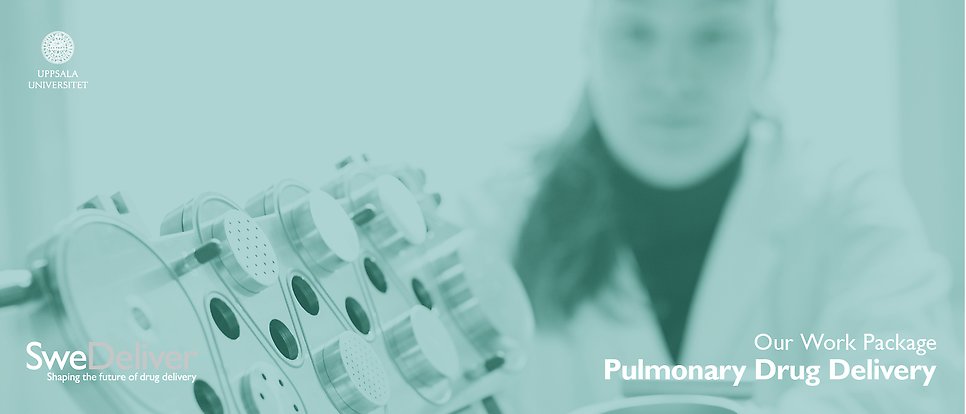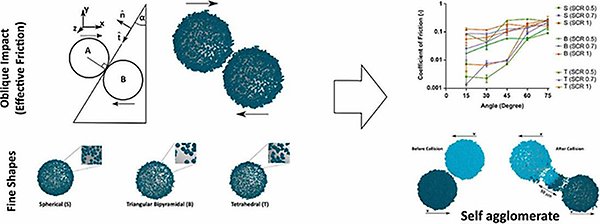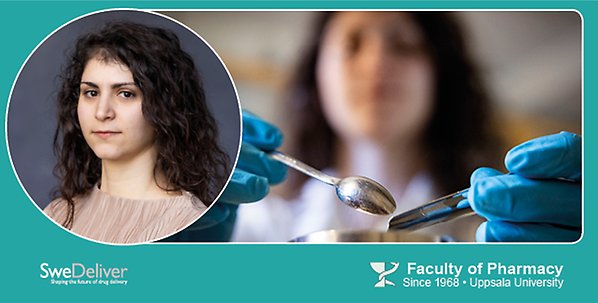Pulmonary Drug Delivery

SweDeliver Work package Pulmonary Drug Delivery focus on the use of novel excipients to improve stability and performance of inhalation powders prepared by spray drying and powder mechanics of adhesive mixtures.
Administration of drugs to the lungs is significantly different to many other administration routes and knowledge on how to improve drug delivery via inhalation is in high demand by the industry. Additionally, pulmonary administration has recently gained significant attention as a potential delivery route for biological drugs such as proteins, peptides, and RNA.
At the start of SweDeliver, pulmonary drug delivery was more or less nonexistent at Uppsala University’s Faculty of Pharmacy , Still, it was decided to have a dedicated Work Package for Pulmonary Drug Delivery embedded in the SweDeliver academic team with strong background in solid particle analysis and characterisation, since particle properties are of great impact the performance of inhaled formulations.
During the last Scientific Advisory Board evaluation, the pulmonary drug delivery driven by academic researchers Professors Göran Frenning and Göran Alderborn jointly with the industrial partners (key researchers from AstraZeneca, Iconovo AB, Ferring, Orion Pharma, Nanologica AB and MVIC AB) had reached an international recognized standard with “very good work, attracting international interest”.

Göran Frenning and Göran Alderborn, SweDeliver
As mentioned, powder properties are of vital importance for inhaled formulations, since physical factors as shape, form and size are critical to successful deposition of the drugs in the lung. Various properties of adhesive mixtures have been investigated by PhD students Anna Simonsson and Sohan Sarangi, including segregation and the effect of drug load on the aerosolization propensity of binary adhesive mixtures (Sarangi et al., Powder Techn., 2021; Sarangi & Ferring, Powder Techn., 2023 (Figure 1, below); Sarangi et al., Eur. J. Pham. Biopharm., 2023).
This work is conducted experimentally and computationally, with the computational analysis of the obtained data providing theoretical models, possibilities to analyse more complex delivery strategies and to provide an improved understanding of formulation performance after inhalation. The excipients in the formulation and the manufacturing method will further affect the performance of the formulation, and spray dried formulations of various excipient and drugs are currently systematically performed by post doc Mayura Talwelkar Shimpi to better design and produce new formulations. The work is continued by PhD student Niklas Bunta Sundin who is also studying the obtained formulations in biorelevant in vitro and in vivo models.

Figure 1: Graphical abstract from the publication “Effective friction in adhesive mixtures intended for inhalation: Simulation of oblique impact of adhesive units” by Sarangi & Frenning. Within the work performed, the effect of fine-particle shape, impact angle, surface coverage ratio and collision velocity were assessed. It was shown that the impact angle and the fine-particle shape have significant effects on the coefficient of friction, and a micromechanical model could be used better understand the particle dynamics during formulation and handling of adhesive mixture. ®Powder Technology, 2023
The powder properties also affect the granulate fragmentation and tabletability. While granules and tablets are more commonly thought of when it comes to oral administration – therefore the research conducted is also relevant to the SweDeliver Work Package for Oral Drug Delivery community – granules and compacts are also used in inhalation device. Therefore, the role of compression on the performance of the resulting compact of dry granulated powders of different compositions have been studied by PhD student Maryam Tofiq, making use of mini-tablets as surrogate granules to study compaction and tabletability, where among others granule deformation tendency was linked to the loss of tabletability (Tofiq et al., Powder Techn., 2022).
Research by PhD student Marilena Marinaki has also been devoted to understanding the loading-unloading cycle during pressure shaping of agglomerates and – in particular – what information can be extracted from the unloading stage and how the processes occurring during this stage affect the quality of the agglomerates.

Marilena Marinaki, PhD student, SweDeliver
A physiologically relevant in vitro method for the dissolution of inhalation powders has been developed by PhD student Irès van de Zwaan, using the assay to investigate dissolution of commercial inhalation products, drug-loaded mesoporous silica particles obtained from our partners and drug-containing hyaluronic acid gel particles formed by spray drying (van der Zwaan et al., Mol. Pharm., 2022; Nikjoo et al., Int. J. Pharm., 2023).
The latter was developed to study how excipient selection and amount thereof can be used to obtain controlled release. Further work within in vitro in vivo correlation (IVIVC) was performed by PhD students Johanna Eriksson and Erik Sjögren who have developed a physiology-based biopharmaceutics (in silico) model including predicting systemic exposure of inhaled drugs (Eriksson et al., Eur. J. Pharm. Biopharm, 2020).
In an cross-work package project lead by researcher Ann-Sofie Persson, the overall aim was to study to what extent SAXS can be used to measure porosity, pore size and shape of powder systems. The results show that void size and volume specific surface area can be determined with SAXS. A follow up study of the effect of storage time and humidity is in development and the findings obtained so far is currently under preparation.
Work package Leaders
Professor Göran Frenning, Department of Pharmaceutical Biosciences, Uppsala University
Vesna Åkerberg, Iconovo
Research projects
- Adhesive mixtures for inhalation powders
- Development of A Novel Pulmonary Controlled Release Drug Delivery System (Completed project)
- Investigation of adhesive layer microstructure of adhesive mixtures using Small Angle X-ray Scattering
- Microstructure-Property Relationships of Agglomerates Formed by Dry Granulation
- Particle Dynamics and Multiscale Modelling of Adhesive Mixtures for Inhaled Medicines (Completed project)
- Enhanced spray-dried formulations of inhaled drugs
- Understanding the compression–decompression cycle for pressure shaping of agglomerates
- Using novel excipients to improve stability and performance of inhalations powders prepared by spray drying
